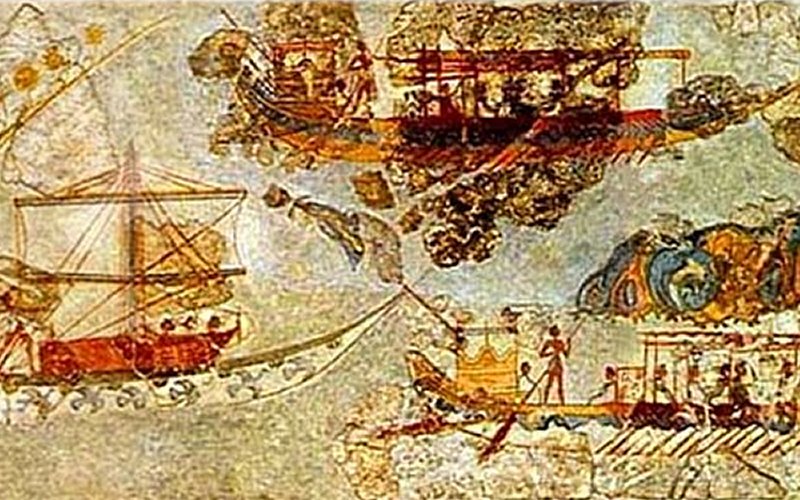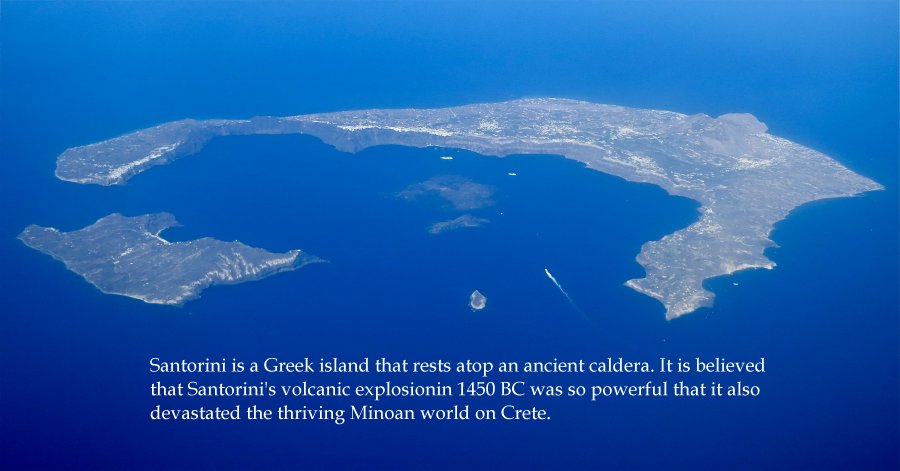Akrotiri Of Thera: Sophisticated City In The Greek Cyclades Devastated By Volcanic Eruption
A. Sutherland - AncientPages.com - Akrotiri is situated in the south of the main island of Thera, also known as Santorini, which lies in the Aegean Sea, approximately 100 km (62 miles) north of Crete.
Akrotiri was one of the most important prehistoric settlements in the region of the Aegean.
The first habitation at the site dates back to at least the 4th Millenium BC and during the Early Bronze Age (3rd Millenium BC), a large settlement was founded and during 2,000 BC – 1700 BC it was additionally extended and eventually became one of the most important urban centers and ports of the Aegean, with strong connections leading to the Minoan civilization.
Around 1500 BC, Akrotiri (sometimes called ‘Minoan Pompeii’) was abandoned because of an earthquake and totally destroyed by volcanic debris; the city has lain hidden undetected for several centuries. It is not yet known the exact date of the earthquake and subsequent volcanic eruption, but it seems clear that Akrotiri was abandoned before the end of Minoan civilization.
Usually, when a disaster occurs, the surviving people want to rebuild their place of living on the same site as soon as possible and if it is possible.
On the island of Santorini, people constructed modern buildings on or near those destroyed in earthquakes. Beneath the modern town, there are still seen volcanic deposits that remind people of the destruction and burial of the Bronze Age thriving settlement of Akrotiri.
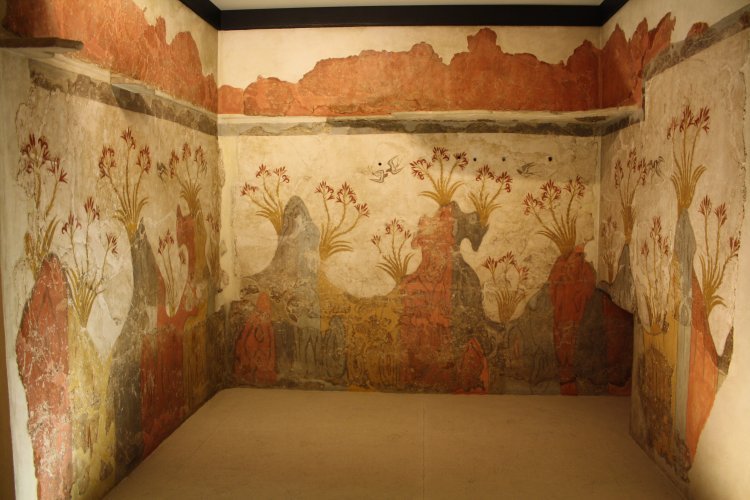
The Lilies Fresco from Akrotiri on the Aegean island of Thera, modern-day Santorini. Image credit: National Archaeological Museum, Athens via ancient.eu
The first chances to find the remains of buildings were in the late 19th century. Akrotiri (or more exactly a modern village situated on a hill nearby) was only found by chance. The name of the site in antiquity is unknown.
Archaeologists have confirmed that preservation of buildings and various artifacts at Akrotiri, on Santorini, is very good, with all beautiful frescoes surviving in some rooms and numerous pieces of pottery as they were abandoned by inhabitants.
Excavations revealed the sophisticated drainage system, buildings with several floors, the splendid wall-paintings, furniture, and pottery, which show that Akrotiri was prosperous and highly advanced. It had trade contacts with Crete and many other neighboring countries such as Cyprus, Syria, Egypt and the Greek Mainland, which was confirmed by a variety of imported objects unearthed in the buildings.
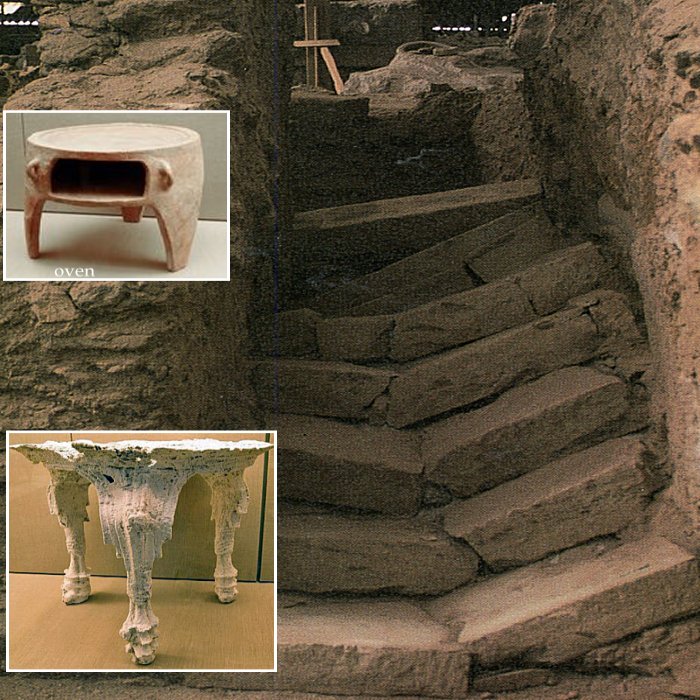
Excavations revealed the sophisticated drainage system, buildings with several floors, the splendid wall-paintings, furniture, and pottery, which show that Akrotiri was prosperous and highly advanced.
Unlike Pompeii, no human remains were discovered at Akrotiri - the residents clearly had been warned of the town's destruction.
The disaster of Akrotiri has been often related to the legendary Atlantis, mentioned in Plato's dialogues Timaeus and Critias. It has been suggested that Santorini may have been the location of ancient Atlantis and the idea was popular in the 1960s when excavation began on the small town of Akrotiri.
After removing the volcanic ash, archaeologists saw pictures of ancient people fishing and navigating by boat along with scenery in the background depicting the island's vegetation and wildlife, exactly as Plato described in his ancient works.
Could it be that these ancient frescos are the sole remaining evidence of ancient Atlantis?
Even if it is believed that Santorini is the location of Atlantis, there are still several discrepancies between this island and the one described by Plato.
For instance, Plato described that Atlantis existed 9,000 years before his lifetime and that Atlantis - as it was frequently mentioned in diverse ancient texts - was a huge landmass compared to Asia Minor and Libya combined. Santorini is not of this size.
There are also several other problems with this particular location of Atlantis.
Anyway, whether Atlantis was a real civilization, or if it was a myth, is a matter of one of the greatest debates. There were several of Plato’s disciples who followed his ideas, principles, and claims along with that of the legendary Atlantis.
Written by – A. Sutherland AncientPages.com Staff Writer
Copyright © AncientPages.com All rights reserved. This material may not be published, broadcast, rewritten or redistributed in whole or part without the express written permission of AncientPages.com
More From Ancient Pages
-
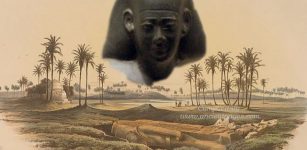 Pharaoh Apries – Was The Betrayed Egyptian King Murdered By His Own People?
Featured Stories | Jun 30, 2021
Pharaoh Apries – Was The Betrayed Egyptian King Murdered By His Own People?
Featured Stories | Jun 30, 2021 -
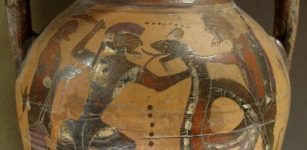 Cadmus – Legendary Phoenician Hero And Founder Of Prosperous City Of Thebes
Featured Stories | Sep 6, 2023
Cadmus – Legendary Phoenician Hero And Founder Of Prosperous City Of Thebes
Featured Stories | Sep 6, 2023 -
 Neglected Ancient Artifacts That Could Re-Write History – Evidence Of Surprising Advanced Ancient Technology That Shouldn’t Exist
Ancient Mysteries | Feb 19, 2019
Neglected Ancient Artifacts That Could Re-Write History – Evidence Of Surprising Advanced Ancient Technology That Shouldn’t Exist
Ancient Mysteries | Feb 19, 2019 -
 12 Alchemy Symbols Explained
Ancient Symbols | Aug 20, 2018
12 Alchemy Symbols Explained
Ancient Symbols | Aug 20, 2018 -
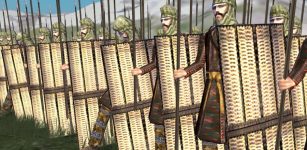 Who Were Persian ‘Sparabara’?
Featured Stories | Aug 28, 2017
Who Were Persian ‘Sparabara’?
Featured Stories | Aug 28, 2017 -
 Bizarre Mummies And Skeletons That May Offer Evidence Strange Mythical Creatures Did Exist
Ancient Mysteries | Nov 16, 2018
Bizarre Mummies And Skeletons That May Offer Evidence Strange Mythical Creatures Did Exist
Ancient Mysteries | Nov 16, 2018 -
 Hermes – Divine Trickster, Psychopomp, Patron Of Merchants And Thieves In Greek Mythology
Featured Stories | Jan 15, 2019
Hermes – Divine Trickster, Psychopomp, Patron Of Merchants And Thieves In Greek Mythology
Featured Stories | Jan 15, 2019 -
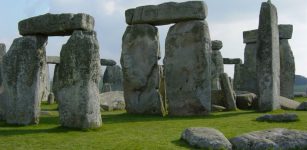 Stonehenge May Have Aligned With The Moon As Well As The Sun
Featured Stories | Jun 4, 2024
Stonehenge May Have Aligned With The Moon As Well As The Sun
Featured Stories | Jun 4, 2024 -
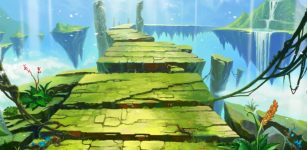 Tír na nÓg – Mythical Land Where Time Floats Slower Than In Mortal Lands
Celtic Mythology | Mar 2, 2020
Tír na nÓg – Mythical Land Where Time Floats Slower Than In Mortal Lands
Celtic Mythology | Mar 2, 2020 -
 4 Things Ancient Greeks And Romans Got Right About Mental Health
Featured Stories | Aug 30, 2024
4 Things Ancient Greeks And Romans Got Right About Mental Health
Featured Stories | Aug 30, 2024 -
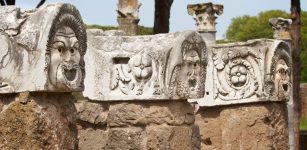 Ostia Antica – Unique Ancient Harbor City In The Suburbs Of Rome
Civilizations | Nov 29, 2018
Ostia Antica – Unique Ancient Harbor City In The Suburbs Of Rome
Civilizations | Nov 29, 2018 -
 Did The Dogon Tribe Have Knowledge Of Theoretical Physics 5,000 Years Ago?
Ancient Mysteries | Aug 2, 2017
Did The Dogon Tribe Have Knowledge Of Theoretical Physics 5,000 Years Ago?
Ancient Mysteries | Aug 2, 2017 -
 Riddle Of An Ancient Underground City No-One Thinks Exist – Symbol For A Spiritual Quest – Part 2
Ancient Mysteries | Sep 18, 2019
Riddle Of An Ancient Underground City No-One Thinks Exist – Symbol For A Spiritual Quest – Part 2
Ancient Mysteries | Sep 18, 2019 -
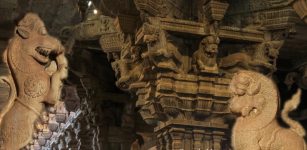 Yali – Divine Protector And Guardian Of Temples Warding Off Evil Forces In Hindu Mythology
Featured Stories | Nov 7, 2020
Yali – Divine Protector And Guardian Of Temples Warding Off Evil Forces In Hindu Mythology
Featured Stories | Nov 7, 2020 -
 Jack o’ Legs – The Kind Hertfordshire Giant Who Robbed The Rich And Gave To The Poor
Featured Stories | Sep 20, 2021
Jack o’ Legs – The Kind Hertfordshire Giant Who Robbed The Rich And Gave To The Poor
Featured Stories | Sep 20, 2021 -
 Historian Discovers Artifacts And Skeletons Of An Ancient Unknown Race In The North American Desert
Ancient Mysteries | May 6, 2024
Historian Discovers Artifacts And Skeletons Of An Ancient Unknown Race In The North American Desert
Ancient Mysteries | May 6, 2024 -
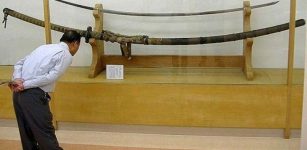 The Norimitsu Odachi – Giant Japanese Sword Remains An Enigma
Artifacts | Mar 22, 2019
The Norimitsu Odachi – Giant Japanese Sword Remains An Enigma
Artifacts | Mar 22, 2019 -
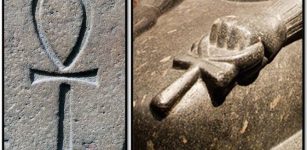 Secrets Of The Egyptian Ankh Cross And Its Energy Properties Revealed
Ancient Symbols | Feb 13, 2020
Secrets Of The Egyptian Ankh Cross And Its Energy Properties Revealed
Ancient Symbols | Feb 13, 2020 -
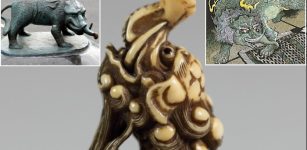 Legend Of Baku – The Dream Eater – Was It An Ancient Supernatural Being?
Featured Stories | Feb 15, 2023
Legend Of Baku – The Dream Eater – Was It An Ancient Supernatural Being?
Featured Stories | Feb 15, 2023 -
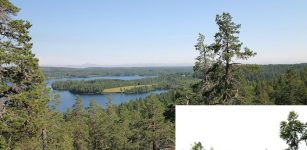 Spir Mountain Cairns: Prehistoric Ancient Monuments To The Dead In Northern Sweden
Featured Stories | Jan 12, 2022
Spir Mountain Cairns: Prehistoric Ancient Monuments To The Dead In Northern Sweden
Featured Stories | Jan 12, 2022

